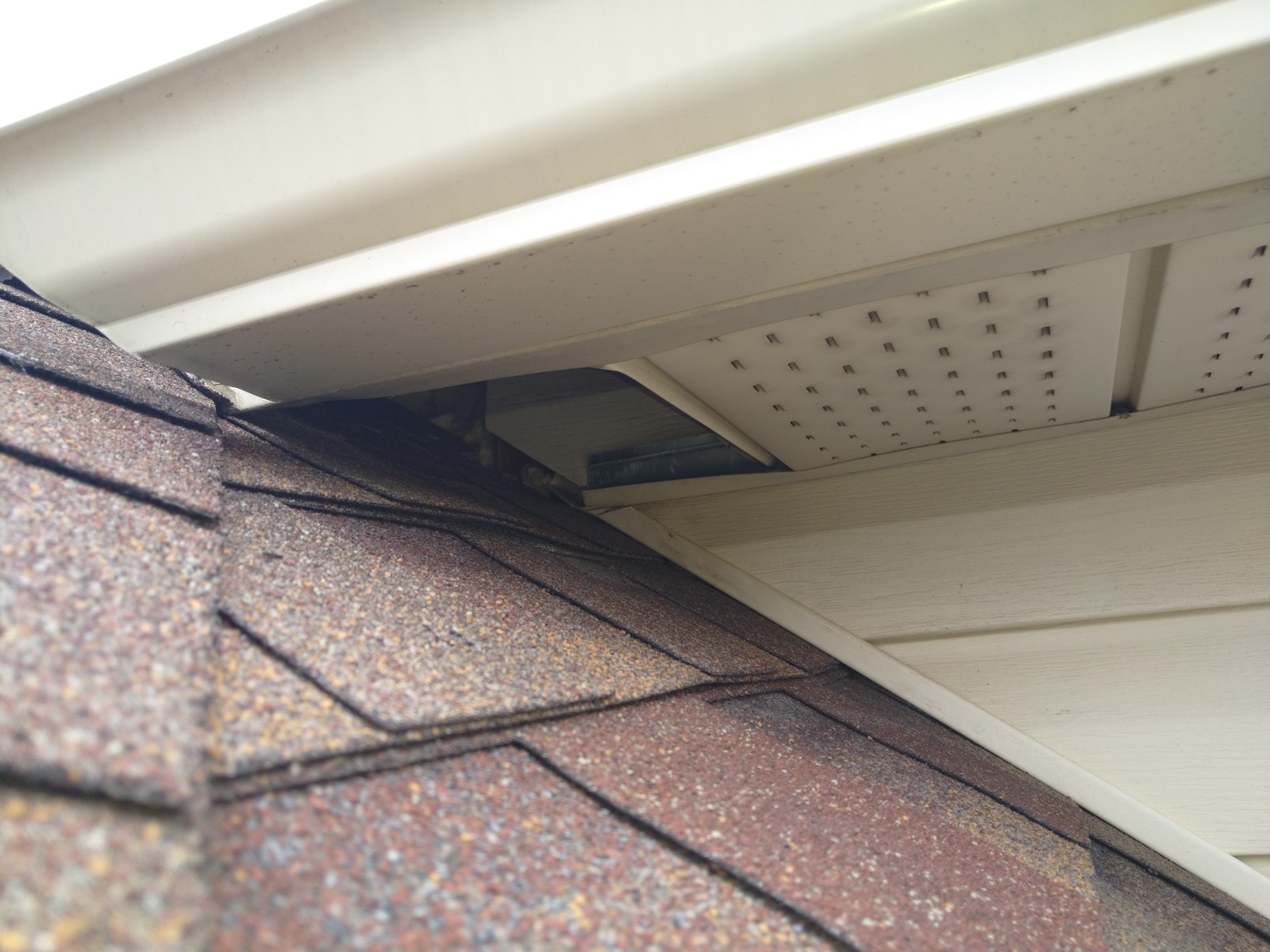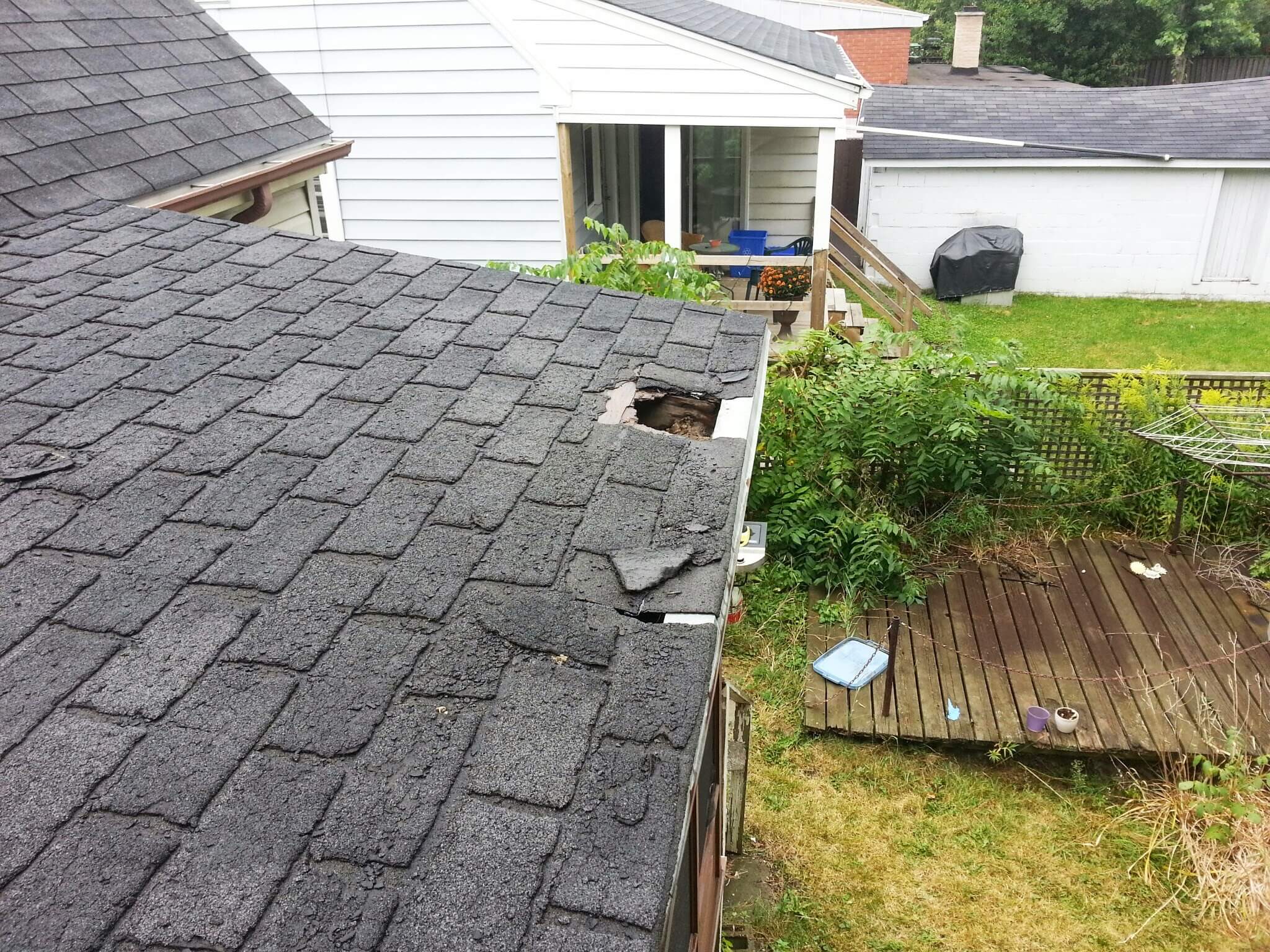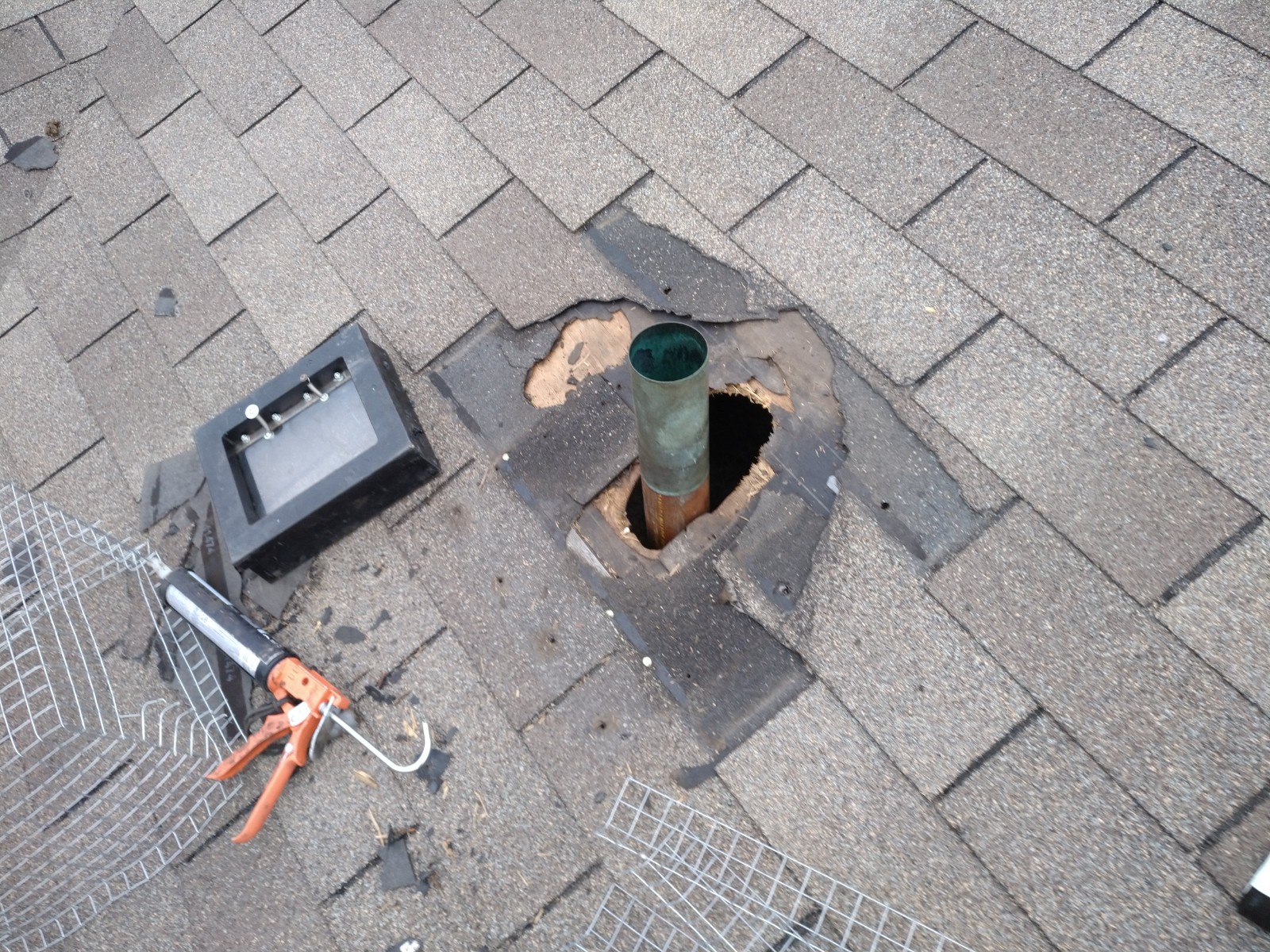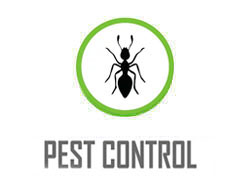
How do Raccoons Get into Houses?
The most important step in keeping your home raccoon-free is securing it against future intrusions. The best place to start is by performing a complete inspection of your home’s exterior, including the roof. Raccoons, like most wild animals, are opportunists capable of taking advantage of even the most minor structural weakness to chew, scratch and squeeze their way in.
Every house is different and that is why it is important to have your home inspected by an experienced professional. A trained wildlife specialist will be able to recognize potential points of entry as well as how to secure them to protect your home. Raccoons are clever, strong and extremely determined when it comes to finding a den site. With over 24 years in the business, Skedaddle has seen and repaired every type of raccoon entry hole imaginable.
Here is a short list of some of the most common:
1. ROOF-SOFFIT INTERSECTIONS

A Roof-Soffit Intersection, or RSI for short, is any area on your roof where the soffit sits just above a section of roof. These sections are usually located where an upper and lower roof meet and make for ideal raccoon entry points. While using the roof for leverage, raccoons use their shoulders to open flimsy soffits made from thin aluminum or plastic. Once the soffit is opened, they can easily gain access to the entire attic.
2. ROOF VENTS

The vents on your roof are designed to allow for proper air circulation in your attic. Unfortunately, raccoons can feel the air escaping from your attic, and destroying the vent cover will give them access to the warmth inside. Again, plastic or aluminum vent covers are no match for powerful raccoons.
3. ROOF EDGE

The edge of your roof, where the eavestrough meets the house, is a particularly vulnerable area for raccoon intrusion. By design, all rain and melted snow on the roof must pass this section on the way to the eavestrough. High amounts of moisture, as well as continuous freezing and thawing deteriorate this area of the roof faster than anywhere else. Opportunistic raccoons easily chew and tear away any rotted wood to gain access to the attic.
4. CHIMNEYS

The bottom of your chimney is an ideal place for a mother raccoon to nurse her babies. Chimneys mimic hollowed out tree cavities, allowing adult raccoons to easily shimmy up and down in search of shelter and protection. Once inside, raccoons will make their home on top of your fireplace’s damper. The chimney caps you can purchase at hardware stores do little to prevent raccoons from getting inside.
5. PLUMBING MATS

The cylindrical vents on your roof connect to your plumbing system and are used to exhaust sewer gasses. When installing a plumbing vent, a hole is cut through the roof to extend the pipe outside. To make it easier to run the plumbing the hole in the roof is usually cut much larger than the pipe. The open space is then covered with a rubber matting. Raccoons will often pull and tear at that rub mat and squeeze themselves into the attic through the hole underneath.
HOW DO I STOP RACCOONS FROM GETTING INSIDE?
When it comes to keeping raccoons outside, there are several steps you can take to protect your home and make your property less appealing to wildlife. Follow the tips below to prevent raccoons from accessing your home:
- Regularly inspect and repair your roof line for damages.
- Trim long branches near your roof that raccoons can climb on.
- Repair any damage on the chimney, and replace the chimney cap if needed.
- Remove any food sources on property that attract raccoons (such as: pet food or fallen fruits)
- Install motion detection lights or flood lights that will encourage the nocturnal animal to leave.
RACCOONS STILL GETTING INSIDE? TIME TO CALL IN THE PROFESSIONALS
Unfortunately for homeowners, raccoons are incredibly clever creatures, who can find their way into almost any attic if they desire. Rather than climb up on your roof and deal with the problem yourself, let the professionals handle the difficult job of removal, clean-up and exclusion. Our technicians are trained to properly assess each one of these vulnerable areas around your home and secure them tightly with high quality galvanized steel screens that no raccoons can tear their way through. If you need help protecting your home from raccoons, call us today at 1-888-592-0387.
Some More Helpful Articles:
- Why Do Raccoons Live In Attics
- How Can I Tell If A Raccoon Has Babies?
- How Can I Locate Raccoon Babies?
- How To Remove Raccoons From An Attic
- How To Clean Raccoon Feces In The Attic
- What Kind Of Damage Can Raccoons Do?
- How To Keep Raccoons Off Roof
- Why Do It Yourself Measures Don’t Work For Raccoon Removal
CALL US TODAY
1.888.592.0387
OR
Request for Services



FOLLOW US